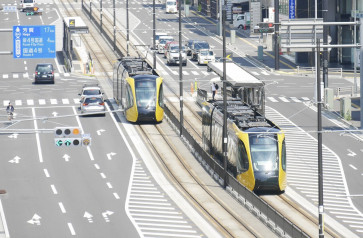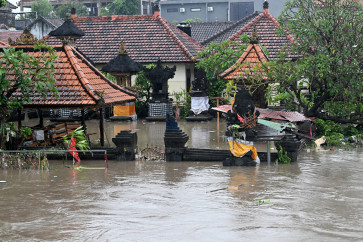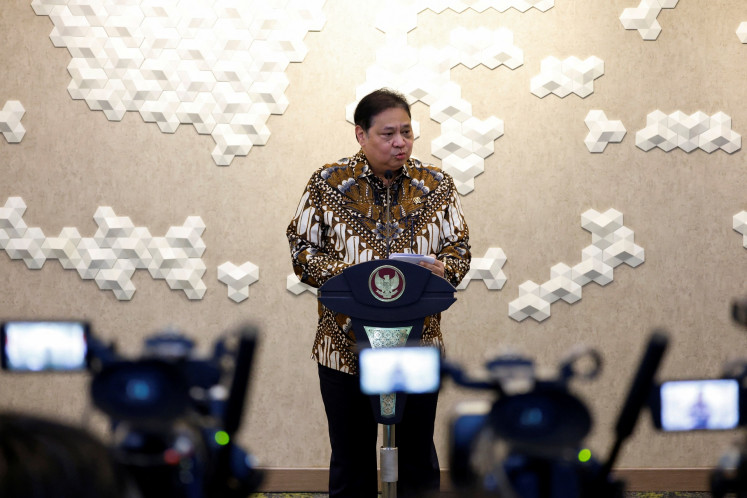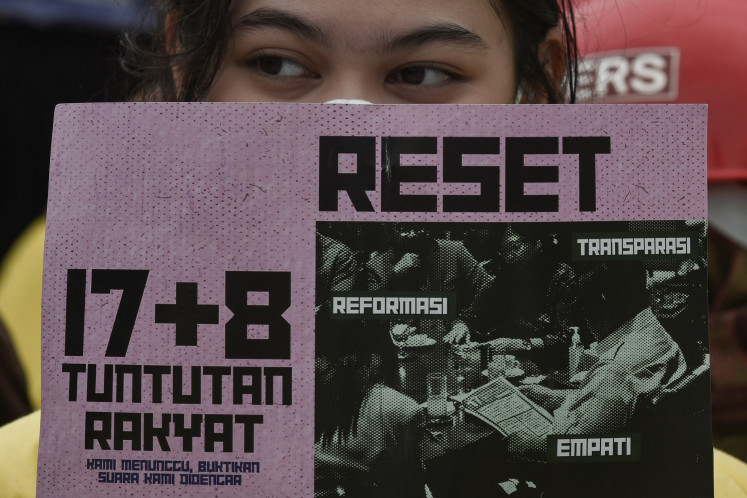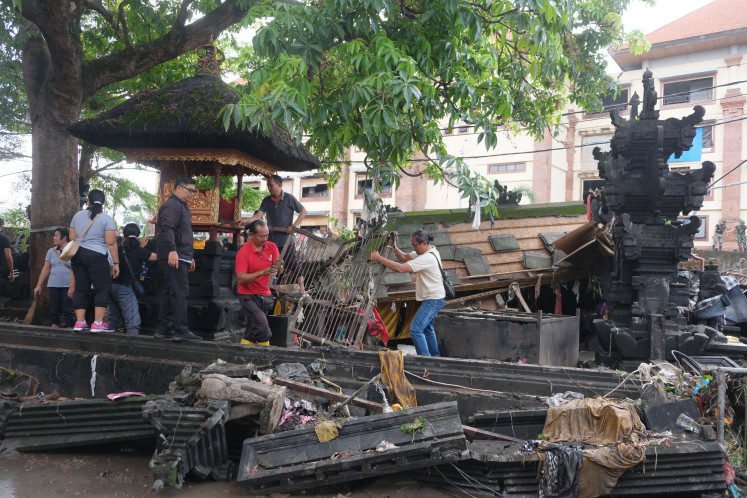Popular Reads
Top Results
Can't find what you're looking for?
View all search resultsPopular Reads
Top Results
Can't find what you're looking for?
View all search resultsRI loses Rp 3.1 trillion annually to dengue fever
The Health Ministry estimates that outbreaks of dengue fever cost Indonesia Rp 3
Change text size
Gift Premium Articles
to Anyone
T
he Health Ministry estimates that outbreaks of dengue fever cost Indonesia Rp 3.1 trillion (US$363 million) in financial loses annually, which includes Rp 343 billion in medical expenses.
Dengue cases in Indonesia, a tropical country with a fast growing population, increase from time to time even though the mortality rate has reportedly declined.
Health Ministry systems specialist Soewarta Kosen said Tuesday that each case resulted in Rp 2.2 million in expenses.
“This is a disease that requires substantial money for treatment and recovery,” he said on the sidelines of the first day of ASEAN Dengue Day Conference.
Dengue hemorrhagic fever is still a major health problem in Indonesia.
The latest outbreak was in 2004. During its peak a total of 78,690 cases were reported every month, with 954 deaths.
With 157,370 dengue cases in Indonesia last year, the public spent Rp 343 billion on medical treatment and lost productivity hours calculated at 2,362 disability adjusted life years.
After seven decades of global research, the latest medical marvel is reportedly just around the corner.
France-based pharmaceutical company Sanofi Pasteur is currently running clinical trials for the first-ever developed vaccine in several countries, including Indonesia.
“We are hoping that the first dengue vaccine will be licensed in 2014,” said Richard T. Mahoney, a researcher from the South Korea-based International Vaccine Institute.
Maloney said that it was very difficult to develop a vaccine for dengue as it involved four different viral serotypes.
Concern about the high price of vaccines, however, emerged after UNICEF disclosed that the world’s largest vaccine manufacturer is among those charging relatively high prices for diphtheria-tetanus and trivalent oral polio vaccines.
Alain Bouckenooghe, the company’s associate vice-president and regional head for Asia Pacific for clinical research and development, dismissed accusations about the company’s expensive prices, saying that many pharmaceutical companies sold their products at higher rates.
“We are a vaccine company and we make vaccines so that they are used. We will make all efforts to bring it within reach of those who need it.”
Bouckenooghe said that prices of vaccines could depend on several factors, such as whether the vaccine will be used by more people or only the private market.
He said his company sought mechanisms to make vaccines more affordable.
“We want to implement tiered-pricing so that wealthier countries will pay more than poor countries. Some companies have fixed prices. We will have a tiered price.”
On its website, Sanofi Pasteur said that it would maintain low prices it offered to the Global Alliance for Vaccines and Immunization (GAVI) for 16 countries that were expected to exit the alliance in 2016, including Indonesia.
GAVI, an alliance consisting of donor countries and institutions, helps poor nations gain access to vaccines, which are actually available in developed countries, but are still expensive.
The alliance, for example, designed a mechanism, called Advanced Market Commitment (AMC), focusing on wider access to pneumococcal vaccines.
Through AMC donors money committed to guarantee the price of vaccines that have become the incentive for drug makers to invest considerable sums for research and development and build manufacturing capacity.
The AMC succeeded in lowering the price of pneumococcal vaccines to US$3.50 per dose for developing countries from its actual price in the developed world of US$70. (rcf/lfr)



